Building a koi pond is not only a task, but also an art. It requires knowledge, experience, and dedication to create a beautiful and functional ecosystem that will provide your koi with a healthy and safe environment to thrive. As a professional koi pond builder, I have been designing and constructing ponds for years, and I am excited to share my expertise with you.
In this article, I will guide you through the essential steps of building a koi pond. From choosing the right location to selecting the appropriate materials and equipment, I will provide you with helpful tips and insights that will help you succeed in creating a stunning water feature that will add value to your property and bring joy to your life. Whether you are an experienced DIY enthusiast or a beginner looking to embark on this exciting journey, this article is designed to assist you in building the perfect koi pond for your needs.
Choosing The Perfect Location For Your Koi Pond
When deciding on the location for your koi pond, there are several factors to consider. One of the most important is the amount of sunlight that the area receives. Koi fish thrive in warm water and require plenty of sunlight to maintain their health and vibrant colors. Therefore, it is essential to choose a location that receives at least six hours of direct sunlight per day. This can be achieved by selecting an area that is not obstructed by trees or other structures.
In addition to considering the benefits of sunlight, potential hazards must also be taken into account when choosing a location for your koi pond. For example, overhanging trees can drop leaves and debris into the water, which can increase maintenance requirements and negatively impact water quality. It is also important to avoid areas with excessive runoff from nearby roads or buildings, as this can introduce harmful pollutants into the pond.
The surrounding environment can have a significant impact on your koi pond’s success, so it is crucial to carefully evaluate all aspects before making a final decision. Cost considerations should also be taken into account, as some locations may require additional excavation or landscaping work to prepare the site properly. In summary, selecting an appropriate location involves weighing up various factors such as sunlight exposure and potential hazards while balancing cost considerations with environmental suitability. Once you have identified a suitable spot, you can then move onto determining the size of your pond.
Determining The Size Of Your Pond
Determining the appropriate size of your koi pond is a crucial step in building a successful water feature. To start, it is essential to consider the number of koi fish you plan to keep and their projected growth rate over the next few years. This will give you an idea of how much space they will need to swim comfortably.
Once you have determined the number of koi fish you want to keep, it is time to think about the size of your property and how much space you are willing to dedicate to the pond. Remember that larger ponds require more maintenance, and thus higher costs. Calculating cost is an important consideration when deciding on the size of your koi pond.
In addition to calculating cost, selecting appropriate depth for your pond can affect its overall health and success. Ideally, a koi pond should be at least four feet deep. This depth provides adequate space for your fish to swim while also ensuring that they are protected from predators such as raccoons and heron.
To summarize, determining the size of your koi pond requires careful consideration of various factors such as projected growth rate, available property space, and budget allocation. It is important not only to calculate costs but also select an appropriate depth for optimal fish health and protection from predators. With these factors in mind, you can move on to designing your perfect koi pond that meets both aesthetic and practical needs.
Designing Your Koi Pond
When it comes to building a koi pond, designing the aesthetics is one of the most exciting parts of the process. The design of your pond should reflect your personal style, while also considering the needs of your koi fish. To start, consider the size and shape of your pond. A larger pond will allow for more fish and greater depth, which can help regulate temperature and provide ample space for plants and aquatic life.
Budget considerations are also an important factor when designing your koi pond. While it may be tempting to splurge on expensive materials or features, it’s important to keep in mind that a well-designed pond doesn’t have to break the bank. Consider using natural materials like rocks and gravel for landscaping, or opt for a pre-formed liner instead of a custom-built option.
Ultimately, the key to designing a successful koi pond is finding balance between form and function. Aesthetics are important, but so is ensuring that your pond meets the needs of your fish in terms of water quality and circulation. By taking into account budget considerations and focusing on creating a healthy environment for your koi fish, you can create a beautiful outdoor space that brings joy to both you and your finned friends.
Transitioning into selecting your pond liner: Once you’ve established the ideal size and shape for your koi pond, selecting the right liner is crucial in ensuring its long-term success.
Selecting Your Pond Liner
When it comes to building a koi pond, selecting the right pond liner is crucial. With so many options available, it can be challenging to determine which one is best suited for your needs. Different types of liners have their own set of advantages and disadvantages, so it’s essential to compare them carefully before making a final decision.
One popular option for pond liners is EPDM rubber. This material is highly durable and resistant to UV rays, making it an ideal choice for outdoor ponds. PVC liners are another option that offers similar benefits but may not be as long-lasting as EPDM. Alternatively, if you’re looking for a more natural look, consider using a bentonite clay liner. This type of liner must be installed correctly to avoid leakage issues.
If your pond liner becomes damaged or starts leaking, there are several tips you can follow to repair it. First, locate the damaged area and clean it thoroughly with soap and water. Once the surface is dry, apply a patch made from the same material as your liner using adhesive designed for use with that material. Be sure to smooth out any bubbles or wrinkles in the patch to ensure a tight seal.
Choosing the right pond liner is an important step in building a successful koi pond. By comparing different types of liners and following proper maintenance techniques, you can ensure your pond remains in top condition for years to come. In the next section, we’ll discuss how choosing the right filtration system can further enhance your koi pond’s health and beauty.
Choosing The Right Filtration System
As important as the water itself, choosing the right filtration system is crucial to the success of your koi pond. A good filtration system not only removes debris and harmful substances from the water, but also maintains healthy water conditions for your koi. There are a variety of filtration systems available on the market today, each with its own benefits and drawbacks.
One popular filtration option is the mechanical-biological filter. This type of filter uses a combination of mechanical and biological processes to clean the water. The mechanical process involves removing larger particles such as leaves and twigs, while the biological process uses beneficial bacteria to break down harmful substances in the water. Though this type of filter requires frequent cleaning and maintenance, it is an effective option for maintaining good water quality in your koi pond.
Another option to consider is a bead filter system. This type of filter utilizes small plastic beads to trap debris in the water as it passes through. Bead filters are known for their high efficiency and require less maintenance than other options. However, they can be more expensive upfront and may require additional equipment such as a separate pump or pre-filter.
As you choose which filtration system is best for your koi pond, keep in mind both maintenance tips like regular cleaning schedules and cost considerations such as initial investment versus long-term savings. Ultimately, investing in a quality filtration system will ensure that your koi thrive in a healthy aquatic environment for years to come.
Looking ahead towards installing your pond skimmer and bottom drain, it’s important to remember that these components work together with your chosen filtration system to maintain excellent water quality in your koi pond. By properly installing these elements, you’ll be setting yourself up for success when it comes to keeping your pond clean and clear for all who inhabit it.
Installing Your Pond Skimmer And Bottom Drain
When it comes to installing a pond skimmer and bottom drain, you have two options: DIY or professional installation. While a DIY installation may save you money initially, it may end up costing more in the long run if not done correctly. Professional installation ensures that everything is installed properly and reduces the risk of leaks or other issues.
Cost considerations for installing a skimmer and bottom drain include the cost of the materials, labor fees if using a professional, and any additional equipment needed. The cost of materials will vary depending on the size of your pond and the type of skimmer and drain you choose. Labor fees for professional installation can also vary greatly based on location and experience level.
Overall, when considering whether to install a skimmer and bottom drain yourself or hire a professional, it’s important to weigh the potential costs versus benefits. While DIY may seem like an attractive option initially due to cost savings, hiring a professional can provide peace of mind knowing everything is installed properly. In addition, professionals often have access to equipment that you may not have access to as a DIY-er.
As you move forward with your koi pond project, the next step after installing your pond skimmer and bottom drain is adding rocks and gravel to your pond’s surface. This will not only add aesthetic value but also provide hiding places for your fish while helping to maintain water quality by providing surface area for beneficial bacteria growth.
Adding Rocks And Gravel To Your Koi Pond
- When choosing rocks for a koi pond, it is important to consider the size and weight of the rocks, as well as their potential to cause damage to the pond liner.
- Gravel should be carefully washed and rinsed before adding it to the koi pond in order to prevent clouding the water.
- Rocks should be added to the pond first, taking care to create a flat surface for the pond liner to rest on.
- Once the rocks are in place, the gravel should be carefully poured into the pond in even layers.
- The gravel should be spread out evenly over the rocks and should not be deeper than 4 inches.
- Rocks and gravel should be placed with care and in an aesthetically pleasing way to ensure a beautiful finished product.
Choosing Rocks
When it comes to adding rocks and gravel to your koi pond, choosing the right types of rocks is essential. There are various types of rocks that you can use, including natural stones, boulders, and river rocks. Natural stones are a popular choice because they come in different sizes, colors, and shapes. Boulders add depth and dimension to your pond while river rocks create a natural look.
To create a natural look when choosing rocks for your koi pond, consider the size of the stones. Use larger boulders as focal points in your pond and arrange smaller stones around them. The key is to make sure that the rocks blend seamlessly with the surrounding landscape. You should also ensure that the size of the rock matches its placement in the pond. For example, small pebbles should be placed at the bottom of the pond while larger boulders should be placed near the edge.
When selecting rocks for your koi pond, it is important to choose ones that are safe for your fish. Avoid using sharp-edged or rough-surfaced stones as they can harm your koi’s delicate skin. You should also avoid using limestone or sandstone as these types of rocks can affect water chemistry. With careful consideration and proper placement, adding rocks to your koi pond will enhance its beauty and provide a natural environment for your fish to thrive in.
Preparing Gravel
When it comes to adding rocks and gravel to your koi pond, preparing the gravel is an essential step. Properly preparing the gravel ensures that it is free of any debris and contaminants that could harm your koi fish. There are various types of gravel available, including pea gravel, river rock, and crushed granite. Each type has its unique characteristics that can enhance the overall look of your pond.
Before adding the gravel to your koi pond, it is crucial to wash it thoroughly with a garden hose. This process removes any dirt or dust on the surface of the stones. You should also remove any larger pieces of debris such as twigs or leaves from the gravel. Once you have washed and cleaned your chosen type of gravel, you can begin placing it in your pond.
When placing the gravel in your koi pond, use different techniques to create depth and texture. One popular method is layering different sizes of gravel in specific areas of the pond. For example, using smaller pebbles near plants or at shallow areas while using larger stones in deeper parts creates a natural look. It’s important to avoid creating steep slopes with the gravel as this can make it difficult for your fish to swim and may cause damage to their scales. By following these steps, you can ensure that your koi pond looks stunning while providing a safe environment for your fish to live in.
Adding Rocks And Gravel
When it comes to designing and building a koi pond, adding rocks and gravel is an essential aspect that can enhance the overall look of your pond. Decorative options are plentiful, and you can choose from various types of gravel such as pea gravel, river rock, or crushed granite. Each type has its unique characteristics that can add texture, depth, and color to your pond.
However, before you start adding rocks and gravel to your koi pond, you need to consider maintenance considerations. Proper preparation of the gravel is crucial as it ensures that it is free from any debris or contaminants that could harm your koi fish. Washing the stones thoroughly with a garden hose and removing any large pieces of debris should be done before placing them in the pond.
When placing rocks and gravel in your koi pond, use different techniques to create depth and texture. Layering different sizes of gravel in specific areas of the pond is one popular method. It’s important not to create steep slopes with the rocks as this might make it difficult for your fish to swim or cause damage to their scales. By following these guidelines when adding rocks and gravel to your koi pond, you can ensure that it looks stunning while providing a safe environment for your fish to thrive in all year round.
Installing Your Pond Pump And Uv Sterilizer
What good is a koi pond without a functioning pump and UV sterilizer? These two elements are crucial to maintaining the cleanliness and health of your pond. Before installing them, make sure you have chosen the appropriate size for your pond. A pump that is too small will not be able to circulate the water effectively, while one that is too large will create unnecessary turbulence.
Once you have chosen the right equipment, it’s time to install them properly. Start by placing the pump at the bottom of the pond, near the deepest point. This will ensure that it is drawing in water from all levels of the pond. Connect the pump to a filter box or chamber where debris can be collected and removed easily. Next, attach the UV sterilizer to the outflow pipe of the filter box or chamber. This will kill any harmful bacteria or pathogens in the water, keeping your koi healthy.
Proper maintenance of your pump and UV sterilizer is essential to keep them running smoothly. Regularly check for debris buildup in your filter box or chamber and clean it out as necessary. If you notice any issues with your pump or sterilizer, troubleshoot before calling a professional for help. Most problems can be solved with simple techniques such as cleaning parts or adjusting settings.
As important as they are, pumps and UV sterilizers are just one aspect of building a successful koi pond. In our next section, we’ll discuss how adding plants to your pond can enhance its natural beauty while also providing benefits for your koi’s well-being.
Adding Plants To Your Koi Pond
Aquatic plants are a great addition to any koi pond. They provide many benefits, including aesthetic appeal, water filtration, and oxygenation. The presence of aquatic plants in your koi pond can also help regulate the temperature of the water and provide shade for your fish on hot days.
When choosing the right plants for your koi pond, it’s important to consider factors such as sunlight exposure and water depth. Some popular choices include water lilies, lotus plants, and various types of submerged plants. It’s recommended that you choose a variety of different plants to create a balanced ecosystem that can support both your koi fish and the plant life.
Overall, incorporating aquatic plants into your koi pond provides numerous benefits that can enhance the health and appearance of your pond. When choosing the right plants, be sure to consider factors such as sunlight exposure and water depth to ensure optimal growth conditions. With proper care and maintenance, your aquatic plants will flourish alongside your beloved koi fish.
As you continue building your perfect koi pond, it’s important to consider how best to introduce your new pets into their new environment.
Introducing Your Koi To The Pond
As you add plants to your koi pond, it’s important to remember that introducing koi to their new home is a delicate process. Imagine yourself as a parent preparing your child for their first day of school: just as you want your child to feel comfortable and familiar in their new environment, you want your koi to feel safe and secure in their new pond. Acclimating koi requires patience and attention to detail, but the end result of happy, healthy fish is well worth the effort.
One key consideration when introducing koi to your pond is water temperature. Koi are cold-blooded creatures that thrive in water between 65-75 degrees Fahrenheit. Before adding your fish, be sure they have time to adjust gradually to the temperature of the pond water. You can do this by placing them in a container with some of the pond water for 10-15 minutes at a time over the course of several hours. Once they seem relaxed and comfortable, they’re ready to make the move into their new home.
Another factor that can impact how well your new fish acclimate is water quality. Koi are sensitive creatures that require pristine water conditions in order to thrive. Make sure you’ve taken steps beforehand to ensure proper filtration and adequate oxygenation in your pond. It’s also important to monitor pH levels regularly and keep ammonia levels low through consistent maintenance practices like partial water changes.
Tips for Introducing Your Koi
- Gradually introduce koi into their new environment by acclimating them slowly.
- Monitor water temperature carefully before adding fish.
- Ensure excellent water quality before introducing koi.
- Never release fish directly into a newly constructed or recently cleaned pond.
- Avoid overcrowding your pond; an appropriate number of fish will depend on factors like size and filtration capacity.
As you prepare to introduce koi into your newly planted pond, remember that success is all about preparation and attention to detail. Take the time to make sure your water quality is excellent and that you’ve given your fish plenty of time to adjust to their new environment. With the right care and attention, your koi will thrive in their new home for years to come. In the next section, we’ll discuss how to monitor water quality in your pond to ensure optimal conditions for your fish.
Monitoring Your Water Quality
Testing water is an essential part of maintaining a healthy koi pond. There are several ways to test the quality of your water, including pH testing, ammonia and nitrate testing, and dissolved oxygen testing. These tests can help you monitor the balance of your pond’s ecosystem.
Maintaining balance in your pond is crucial for the health and well-being of your koi. One way to achieve this balance is to keep track of the water temperature, as different types of bacteria thrive at different temperatures. Additionally, keeping an eye on algae growth can help prevent imbalances in the pond. Algae blooms can deplete oxygen levels and cause harm to fish.
Regularly monitoring water quality will help prevent health problems for your koi and ensure that they thrive in their habitat. Maintaining a healthy balance in your pond involves regularly testing water and taking action if any imbalances are detected. By doing so, you can ensure that your koi will stay happy and healthy for years to come. In the next section, we will discuss proper feeding techniques for your koi.
Feeding Your Koi
As you gaze upon your beautiful koi pond, you can’t help but feel a sense of pride and accomplishment. However, maintaining the health and wellbeing of your koi fish is just as important as building the pond itself. Feeding your koi is one of the most crucial aspects to ensure their longevity.
Creating a feeding schedule for your koi fish is essential. Overfeeding can cause health problems such as obesity and water contamination. Underfeeding can lead to malnourishment and stunted growth. Generally, it’s recommended to feed your koi once or twice a day with an amount they can consume in 5-10 minutes. During colder months, decrease feeding to once every two days.
Understanding the types of koi food available is also crucial for their health. Koi food comes in pellets or flakes, with varying protein content depending on the brand and type. It’s best to choose high-quality food that contains all necessary nutrients for optimal growth and immune system support. Supplementing their diet with fresh fruits and vegetables can also provide added nutrition.
As you continue to care for your beloved koi fish, remember that feeding them properly is vital for their overall health and wellbeing. Creating a feeding schedule and choosing high-quality koi food will ensure their longevity in your beautiful pond. In the next section, we’ll discuss how to clean and maintain your koi pond to keep it looking pristine for years to come.
Cleaning And Maintaining Your Koi Pond
Feeding your koi is only one aspect of caring for your pond. Preventing algae growth is another important factor in maintaining the health and beauty of your koi pond. Algae can be a nuisance to both the aesthetic appearance of your pond and the health of your fish. To prevent algae growth, it is important to maintain proper water chemistry and circulation by regularly testing the water and keeping up with routine maintenance.
Dealing with predators is also a crucial part of maintaining a healthy koi pond. Predators such as raccoons, herons, and cats can pose a threat to your fish if not properly addressed. Installing netting or fencing around your pond can help deter predators, as well as adding hiding places for your fish, such as plants or rocks. It is important to also remove any fallen leaves or debris around the pond that may attract predators.
In summary, proper maintenance of a koi pond involves not only feeding your fish but also preventing algae growth and dealing with predators. By taking these steps, you can ensure the health and safety of both your fish and the aesthetic appeal of your pond. Next, we will discuss how to winterize your koi pond to protect it during colder months.
Winterizing Your Koi Pond
Preparing your koi pond for the winter months is crucial in ensuring the health and longevity of your fish. According to a recent study, approximately 70% of koi deaths occur during the winter season due to improper preparation. As a professional koi pond builder, it is important to take the necessary steps to protect your investment and ensure that your fish are healthy and happy throughout the colder months.
One key aspect of preparing your koi for winter is adjusting their feeding schedule. As temperatures drop, their metabolism slows down, meaning they require less food. Overfeeding can lead to excess waste, which can become toxic in the water and harm your fish. It is best to gradually reduce their feedings as temperatures decrease. However, it is still important to provide them with proper nutrition during this time using specialized winter feed that will help them maintain good health.
In addition to adjusting their feeding schedule, there are other strategies you can implement to protect your koi from harsh winter conditions. Adding insulation around the pond or covering it with a netting material can help prevent heat loss and keep debris out of the water. It is also important to regularly monitor water quality and temperature levels throughout the winter months. By taking these measures, you can ensure that your koi thrive even in cold weather conditions.
As we move into troubleshooting common problems in your koi pond, it is important to remember that prevention is key when it comes to maintaining a healthy environment for your fish. By properly preparing them for winter through adjusting their feeding schedule and implementing protective measures, you can avoid many potential issues that may arise later on. However, if problems do occur, there are steps you can take to address them quickly and effectively without causing further harm to your beloved koi.
Troubleshooting Common Problems In Your Koi Pond
After building your koi pond, it’s not uncommon to encounter a few problems along the way. Identifying diseases is one of the most common issues that koi owners face. Diseases can be caused by various factors such as poor water quality, parasites, and bacteria. Some of the most common diseases that affect koi include Ich, Ulcers, Dropsy, and Fin Rot.
To deal with these diseases effectively, you should regularly test the water quality in your pond to ensure that it’s within acceptable parameters. You should also quarantine new fish before introducing them to your pond to avoid spreading any potential infections. Additionally, keeping your pond clean by removing debris and maintaining proper filtration will help prevent disease outbreaks.
Another issue that you may encounter when building a koi pond is dealing with predators such as raccoons and herons. These animals are attracted to the fish in your pond and can cause significant damage if left unchecked. To keep predators at bay, you can use deterrents such as netting or fencing around your pond. Motion-activated sprinklers can also be effective at scaring off unwanted visitors.
In summary, identifying diseases and dealing with predators are two common problems that you may encounter when building a koi pond. Regularly testing water quality, quarantining new fish, maintaining proper filtration, and using deterrents can help mitigate these issues. By taking these preventative measures, you can ensure that your koi thrive in their new home for years to come.
Conclusion
Koi ponds are a beautiful addition to any outdoor space, but building one requires careful planning and execution. The location of the pond should be chosen carefully, taking into account factors such as sunlight exposure and proximity to trees or other potential hazards. Once the location has been determined, the size and design of the pond can be planned out, along with the selection of a suitable liner.
Proper filtration is essential for maintaining a healthy environment for your koi, as is regular feeding and cleaning. Winterizing your koi pond is also an important step in ensuring its longevity. Despite these necessary steps, problems may still arise in your koi pond. However, with proper troubleshooting techniques and attention to detail, these issues can be resolved quickly and efficiently.
According to a recent survey, 82% of koi pond owners reported feeling a sense of calmness and relaxation when observing their fish swimming in their pond. This statistic highlights not only the beauty of these aquatic creatures but also the peaceful atmosphere they create in their surroundings. As professional koi pond builders, it is our mission to provide our clients with not only a stunning water feature but also a space that promotes tranquility and relaxation. By following these guidelines for building and maintaining your koi pond, you too can experience the serenity that comes with owning this type of water feature.
Image Credits
- “Koi Fish Pond” by Eustaquio Santimano (featured)


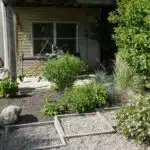



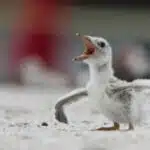
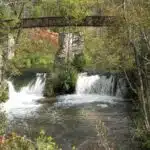

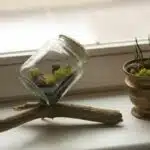

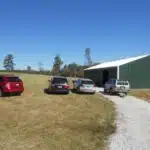

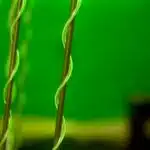
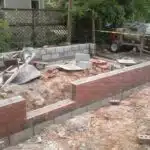
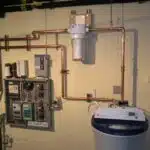


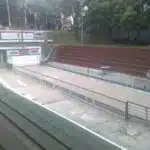







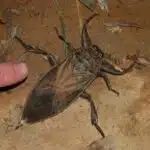


![How To Build A Detached Deck 30 Force Reconnaissance Detachment Deck Shoot [Image 4 of 4]](https://green-life.blog/wp-content/uploads/2023/05/RJo3tlizSGjq-150x150.jpg.webp)